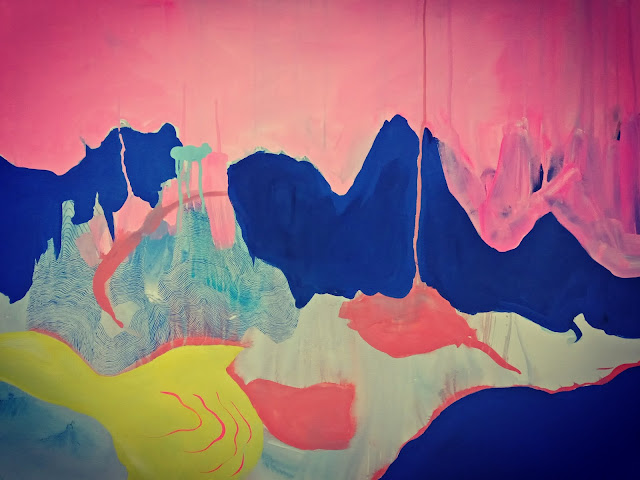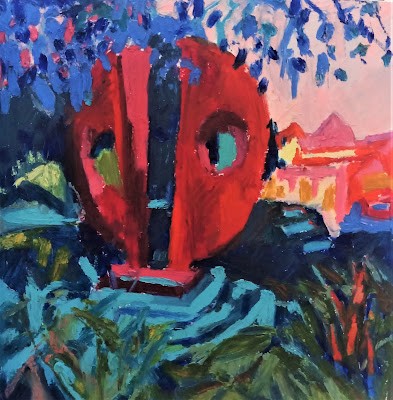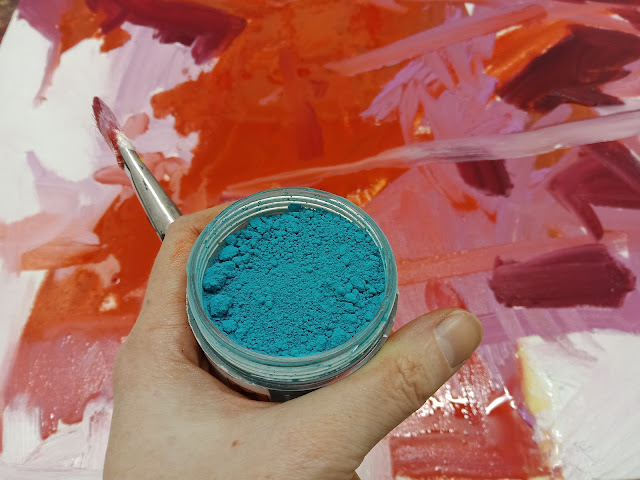Threading Painting and Poetry Together; 奇 (Qi) and 正 (Zheng)
 |
| 金佛山 Jinfo Shan: Light at The Golden Buddha Mountain, Gouache on paper |
Scale
Is
The distance between the ground
We cover
And
The difference between
The difference between
What we were
Where we were
And what we are now
Distance
Is
The difference
In time and space
Between
People
And the journey
From where we are
To what we aspire to be
In 17th Century Chinese Painting theory, 奇(Qi) and 正(Zheng) are two
elements which refer to the traditions of painting and to the creative act of
painting itself. 奇 Qi in this context means firstly difference or oddness, the state
of being unbalanced, but ultimately original. 正 Zheng primarily translates as central or
upright and straight, but also regular, proper and honest. The act of painting
was seen, and can still be viewed, as ‘tradition-as-transmission’ or ‘tradition-as-transformation’.
 |
| (detail of 金佛山 Jinfo Shan: In the Azure Valley) |
Painters were either continuing, or transmitting, the highly esteemed traditions of ancient Chinese painting, or transforming these values with their
work. Both methods brought forth messages rich in value, meaning and composition. The combination of these two elements however brought together the best of both qualities, creating an artwork that would be unique in its originality, whilst also being seeped in the rich knowledge and heritage of landscape painting.
 |
| 17th Century painter and poet Gong Xian |
An artist bringing the two qualities together in a painting meant they were simultaneously acknowledging tradition, the importance of previous master’s work and the lessons they passed on through their own experience, but also demonstrated they were developing, re-creating and transforming this knowledge of painting to create something original, something unique.
 |
| 金佛山 Jinfo Shan: In the Azure Valley, Gouache on paper |
This theory could be further applied
to analysing the structure of an artwork, with 奇 Qi and 正 Zheng coming together to
make a successful painting’s composition simultaneously unbalanced but stable.
Perhaps we can allow these two concepts to flow in our daily lives a little too, in
accepting that at times we may feel unbalanced, or at odds with the ways things
are, but yet remain stable in our perceptions and outlook on life.
 |
| 金佛山 Jinfo Shan: Above and Below, Ropeway Station, Gouache on paper |





Comments
Post a Comment